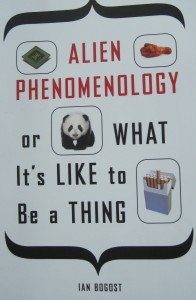We are lucky in modern society to have powerful video technology that fits in the palm of our hands. We have the ability to instantly film with the click of a button and output high quality video. If we accidently shoot the wrong thing we can simply delete it and try again. The beauty of the digital age. Robin has stressed in class that we shouldn’t take this for granted. It’s too easy not to think about what we are filming and how we capture it because today technology can do so much of it for us. To truly appreciate film as both an art and science we should look back to those who pioneered the movie camera. Using the most basic movie cameras they created masterpieces so I wanted to learn more about some of first filmmakers and their creations.
https://www.youtube.com/watch?v=DEQeIRLxaM4
In 1894 inspired by Edison’s peephole kinetoscope the Lumiere brothers developed the cinematograph which was a portable, crank operated camera. A year later they shot their first film titled The Workers Leaving the Lumiere Factory and it featured exactly that. One of their other early actuality films was titled Arrival of a Train at La Coitat Station. French filmmaker Bertrand Tavernier described this film as evidence of the Lumiere brothers being much more than inventors of the cinema or the first filmmakers but genius in ‘their very modern approach to filmic composition, such as their use of diagonals and contrast’. This 50 second film simply documents a familiar everyday occurrence, despite this it’s attained fame and is now a film history icon. It’s interesting to note that this film actually caused fear and terror by cinema audiences. German journalist Hellmuth Karasek wrote “although the cinematographic train was dashing towards the audience in flickering black and white (not in natural colours and natural dimensions), and although the only sound accompanying it was the monotonous clatter of the projectors sprockets… the spectators felt physically threatened and panicked”. It seems to strange to look back and think people were frightened but it’s important to remember the audience weren’t accustomed to seeing a moving image, especially not one that appears to be moving towards them.
https://www.youtube.com/watch?v=d_9N68MO9gM
The Lumiere brothers were the first real documentary filmmakers and they mostly stuck to making these ‘actuality’ films. George Melies on the other hand was quite the opposite. His films were much more fantastical, theatrical and often involved film tricks or special effects. The ‘cinemagician’ discovered the classic substitution stop trick in 1896 and was one of the first filmmakers to use time-lapse photography, multiple exposures, dissolves and hand painted colour in his films. While the Lumiere brothers documented reality, Melies transformed reality through cinematography. Furthermore, unlike the Lumieres who shot on location, Melies worked mostly in a studio, often using elaborate sets. Interestingly, Melies was an audience member of the Lumiere brothers’ first screening and approached them wanting to buy their cinematograph device. The brothers refused his offer so he built his own.
https://www.youtube.com/watch?v=PlsWesjhNWw
By learning about the Lumieres and Melies we are contrasting fiction and non-fiction methodologies. Melies created fantastical fiction and the Lumieres made actuality documentaries yet both tried their hands in the others art.
Over and out,
Luke Egan




